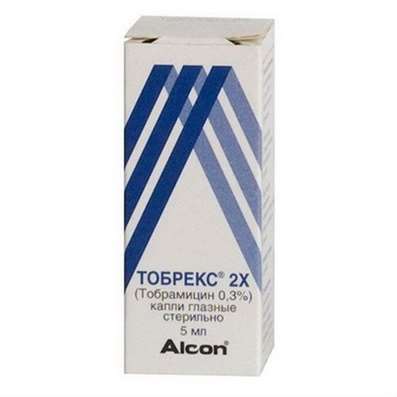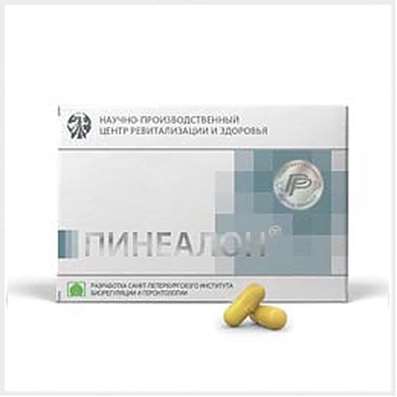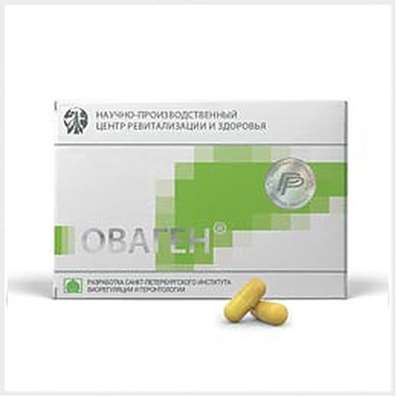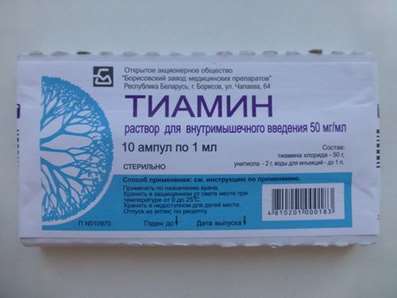Instruction for use: Nimbex
I want this, give me price
Active substance: Cisatracurium besilate
ATX code
M03AC1 Cisatracurium besilate
Pharmacological group
n Cholinolytics (muscle relaxants)
The nosological classification (ICD-10)
Z100 * CLASS XXII Surgical practice
Abdominal surgery, adenomectomy, Amputation, Coronary angioplasty, Angioplasty of the carotid arteries, Antiseptic skin treatment for wounds, Antiseptic Hand, Appendectomy, atherectomy, Balloon coronary angioplasty, Vaginal hysterectomy, The coronary bypass, Interventions in the vagina and cervix, Interventions on the bladder, Intervention in the mouth, Restoration and reconstructive surgery, Hand hygiene of medical personnel, Gynecologic surgery, Gynecological intervention, Gynecological surgery, Hypovolemic shock during operations, Disinfection of purulent wounds, Disinfection of wounds edges, Diagnostic intervention, Diagnostic procedures, Cervical Diathermocoagulation, Long-surgery, Replacing the fistula catheters, Infection in orthopedic surgery, Artificial heart valve, cystectomy, Short-term outpatient surgery, Short-term operation, Short surgical procedures, Krikotireotomiya, Blood loss during surgery, Bleeding during surgery and in the postoperative period, Kuldotsentez, laser photocoagulation, laser coagulation, retinal laser coagulation, Laparoscopy, Laparoscopy in Gynecology, CSF fistula, Small gynecological operations, Small surgical procedures, Mastectomy and subsequent plastic, mediastinotomy, Microsurgical operations on the ear, Mukogingivalnye operation, suturing, Minor surgery, neurosurgical operation, Immobilization of the eyeball in ophthalmic surgery, testectomy, pancreatectomy, Perikardektomiya, The period of rehabilitation after surgery, The period of, convalescence after surgery, Percutaneous transluminal coronary angioplasty, Pleural thoracentesis, Pneumonia postoperative and posttraumatic, Preparation for surgical procedures, Preparation for surgery, Preparation of the surgeon's hands before surgery, Preparation of the colon for surgical procedures, Postoperative aspiration pneumonia in neurosurgical and thoracic surgery, Postoperative nausea, Postoperative bleeding, postoperative granuloma, postoperative shock, The early postoperative period, myocardial revascularization, Radiectomy, gastric Resection, bowel resection, uterine Resection, liver Resection, enterectomy, Resection of part of the stomach, Reocclusion of the operated vessel, Bonding tissues during surgical procedures, Removal of sutures, Condition after eye surgery, Condition after surgery, Condition after surgery in the nasal cavity, Condition after gastrectomy, Status after resection of the small intestine, Condition after tonsillectomy, Condition after removal of the duodenum, Condition after phlebectomy, Vascular surgery, Splenectomy, Sterilization of surgical instruments, Sterilization of surgical instruments, sternotomy, Dental surgery, Dental intervention in periodontal tissues, strumectomy, Tonsillectomy, Thoracic surgery, total gastrectomy, Transdermal intravascular coronary angioplasty, Transurethral resection, Turbinektomiya, Removal of a tooth, cataract surgery, Removal of cysts, tonsillectomy, Removal of fibroids, Removing the mobile primary teeth, Removing polyps, Removing broken tooth, Removal of the uterus body, Removal of sutures, Urethrotomy, Fistula likvoroprovodyaschih ways, Frontoetmoidogaymorotomiya, Surgical infection, Surgical treatment of chronic limb ulcersm, Surgery, The surgery in the anal area, The surgery on the colon, Surgical practice, The surgical procedure, Surgical interventions, Surgery on the gastrointestinal tract, Surgical procedures on the urinary tract, Surgical procedures on the urinary system, Surgical intervention of the genitourinary system, Surgical procedures on the heart, Surgical manipulation, surgery, Surgery on the veins, Surgical intervention, Vascular surgery, Surgical treatment of thrombosis, cholecystectomy, Partial gastric resection, transabdominal hysterectomy, Percutaneous transluminal coronary angioplasty, Percutaneous transluminal angioplasty, Coronary artery bypass, tooth Extirpation, Extirpation of milk teeth, pulpectomy, pulsative cardiopulmonary bypass, tooth Extraction, teeth Extraction, cataract extraction, Electrocoagulation, endourological intervention, episiotomy, Etmoidotomiya, Complications after tooth extraction
Composition and form of release
Solution for intravenous administration 1 ml
Cisatracuria besylate 2 or 5 mg
Auxiliary substances: benzenesulfonic acid solution 32%; water for injections
In ampoules of 2.5; 5 or 10 ml (2 mg) or in bottles of 30 ml (5 mg), in a box of 5 ampoules or 1 bottle.
Description of dosage form
Transparent solution from colorless to pale yellow or greenish-yellow color, free from visible mechanical inclusions.
Characteristic
Nondepolarizing benzyl quinoline muscle relaxant of medium duration.
pharmachologic effect
Pharmacological action - miorelaksiruyuschee, nedepolyarizuyuschee.
It binds to the n-holinoretseptorami endings of the motor nerves and acts as an antagonist of acetylcholine, causing a competitive blockade of neuromuscular conduction, which can be quickly eliminated by anticholinesterase agents such as neostigmine and eudrophonia.
The influence of Nimbex on patients with malignant hyperthermia in history has not been studied.
Pharmacokinetics
In the body at physiological pH and body temperature, Hoffman is eliminated with the formation of laudanosine and mono-quaternary acrylate. The latter undergoes hydrolysis with nonspecific plasma esterases to form a mono-quaternary alcohol. Metabolites are excreted by the liver and kidneys, and they do not possess muscle relaxant properties.
When the drug is administered to adult patients at a dose of up to 0.4 mg / kg, its pharmacokinetics are dose independent (8xED95). Nimbex's pharmacokinetic parameters in a dose of more than 0.1 and 0.2 mg / kg in surgical adult patients are presented in Table 1.
| Parameter | Limits of average values |
| Clearance | 4.7-5.7 ml / min / kg |
| The volume of distribution in the equilibrium state | 121-161 ml / kg |
| T1/2 | 22-29 min |
In elderly patients there is a slight increase in the volume of distribution (+ 17%) and T1 / 2 (+4 min) of the drug.
A clinically significant difference in the pharmacokinetics of cisatracuria besilata in patients with a terminal stage of renal failure and in healthy volunteers is not observed.
In liver failure, there is a small difference in the volume of distribution (+ 21%) and clearance (+ 16%) of cisatracurium besylate, but T1 / 2 and excretion of the drug do not change.
With an infusion or bolus injection, the average clearance is 6.9 ml / kg / min, and T1 / 2 - 28 min. The removal of the drug does not depend on the duration of the infusion.
Clinical Pharmacology
At doses up to 8 times that of ED95 (the average dose required for 95% suppression of the reaction of the tapping muscle of the big toe in response to stimulation of the ulnar nerve) does not cause a dose-dependent release of histamine.
ED95 cisatracuria besilata during opioid anesthesia (thiopental / fentanyl / midazolam) is 0.05 mg / kg; In children during halothane anesthesia - 0.04 mg / kg.
Tsisatrakuriya besilat causes paralysis of the respiratory and skeletal muscles, but does not affect the consciousness and threshold of pain sensitivity.
There are some reports of the development of seizures in patients in intensive care units who received atrakuria besilat in combination with other drugs (introduction of laudanosine metabolite, cisatrakuria besilata and atracuria besilata in high doses is associated with transient hypotension and in some cases with symptoms of excitation of the cortex of the head Brain). Since they usually suffered from one or more diseases predisposing to the appearance of seizures (eg traumatic brain injury, hypoxic encephalopathy, cerebral edema, viral encephalitis, uremia), the causal relationship between the development of seizures and laudanosin is not established. In addition, it should be borne in mind that the concentration of laudanosine in blood plasma with the administration of Nimbex is 3 times less than with infusion of atracurium besylate.
Indications for Nimbec®
Maintenance of relaxation of skeletal muscles and intubation of the trachea during surgery and ventilation in intensive care units.
Contraindications
Hypersensitivity to cisatracurium besylate, atrakuriya besilatu, benzenesulfonic acid.
With caution: a violation of acid-base balance and electrolyte balance; Carcinomatosis or neuromuscular diseases (including myasthenia gravis and myasthenic syndrome) or other conditions that can lead to prolonged neuromuscular blockade; Burns; Hemiparesis or paraparesis; pregnancy; Lactation period.
Application in pregnancy and lactation
During pregnancy and during breastfeeding, use with caution, only if the expected effect of therapy exceeds the potential risk to the fetus. Tsisatrakuriya besilat does not have an undesirable effect on the development of the fetus. Influence on the reproductive sphere has not been studied. It is not known whether the drug penetrates into breast milk.
Side effects
The incidence of adverse reactions, possibly associated with the administration of Nimbex, is less than 0.5%. These include redness of the skin or rash, bradycardia, hypotension and bronchospasm.
Very rarely - severe anaphylactic reactions (when used in combination with one or more anesthetics)
In some cases, the development of muscle weakness and / or myopathy after prolonged use in severely ill patients, in most cases with combined use with corticosteroids (no relationship established using Nimbexa).
Interaction
Means for anesthesia (enflurane, isoflurane and halothane, ketamine), other nondepolarizing muscle relaxants, antibiotics (including aminoglycosides, polymyxins, spectinomycin, tetracyclines, lincomycin and clindamycin), antiarrhythmics (including propranolol, calcium antagonists, Lidocaine, procainamide and quinidine), diuretics (including furosemide, possibly - thiazides, mannitol, acetazolamide), magnesium salts, lithium salts, ganglion blocking agents (trimetafan, hexamethonium) enhance the effect of muscle relaxants.
Previous long-term use of phenytoin or carbamazepine weakens the effect of muscle relaxants.
Combined use with suxamethonium can lead to a prolonged and complex blockade, which can be difficult to eliminate with the help of anticholinesterase agents.
In rare cases, some drugs - antibiotics, beta-adrenoreceptor blockers (propranolol, oxprenolol), antiarrhythmics (procainamide, quinidine), antirheumatic drugs (chloroquine, D-penicillamine), trimetaphan, chlorpromazine, steroids, phenytoin and lithium - may worsen the course or Promote the manifestation of a latent myasthenia gravis, and also cause a myasthenic syndrome, which may be accompanied by an increased sensitivity to nondepolarizing muscle relaxants. When administered under conditions simulating an infusion system with a U-shaped catheter, Nimbex is compatible with the following drugs commonly used during surgery: droperidol, fentanyl citrate, midazolam hydrochloride.
Not compatible with ketorolac, trometamol or injection emulsion propofol.
Dosing and Administration
In / in. Bolus administration. Intubation of the trachea: for adults, a bolus injection of 0.15 mg / kg (administered rapidly, within 5-10 seconds, after which intubation is possible after 120 seconds).
Supportive dose. The duration of neuromuscular blockade can be increased with the help of Nimbexa maintenance doses. Thus, during anesthesia with opioids or propofol, Nimbex, at a dose of 0.03 mg / kg, prolongs neuromuscular blockade by approximately 20 minutes, but the subsequent administration does not lead to its further elongation.
Spontaneous recovery. During opioid or propofol narcosis, the mean recovery time for neuromuscular conduction from 25 to 75% and from 5 to 95% is 13 and 30 minutes, respectively.
Reversibility. Neuromuscular blockade is eliminated by the introduction of standard doses of anticholinesterase agents. The average recovery time of conductivity from 25 to 75% and its complete recovery (T4 coefficient: T1≥0.7) after the administration of the anticholinesterase drug on average at 13% T1 reduction is approximately 2 and 5 minutes, respectively.
Children from 1 month to 12 years of age - the initial dose of Nimbexa for intubation of the trachea is 0.15 mg / kg, injected within 5-10 seconds and creates optimal conditions for intubation of the trachea within 120 s after injection. To ensure a neuromuscular blockade of a shorter duration, it is recommended to administer 0.1 mg / kg (in this case, optimal conditions for intubation of the trachea are created after 120-150 s). In children the duration of the neuromuscular blockade decreases, and the spontaneous recovery of neuromuscular conduction occurs more rapidly.
Halothane can prolong the duration of the neuromuscular blockade caused by Nymbex, by as much as 20%. There is no information on the use of Nimbex in children during anesthesia with isoflurane or enflurane, but it can be expected that these inhaled anesthetics can also increase the duration of the neuromuscular blockade caused by Nymbex by up to 20%.
The maintenance dose (during halothane anesthesia) is 0.02 mg / kg, provides blockade for 9 minutes. However, the subsequent administration of maintenance doses does not lead to its progressive lengthening.
Spontaneous recovery. During anesthesia with opioids or halothane, the average reduction in conduction from 25 to 75% and from 5 to 95% is ~ 11 and 28 min, respectively.
Reversibility. Neuromuscular blockade is eliminated by the introduction of standard doses of anticholinesterase agents. The mean time to restore conduction from 25 to 75% and its complete recovery (T4 coefficient: T1≥0.7) after the administration of the anticholinesterase drug on average with a 13% T1 conduction reduction is approximately 2 and 5 minutes, respectively.
Infusion introduction
Adults and children from 1 month to 12 years of age to maintain the neuromuscular blockade Nimbex can be administered by infusion. To restore the T1 blockade conductivity at a level of 89-99% after the appearance of signs of its spontaneous recovery, an initial infusion rate of 3 μg / kg / min (0.18 mg / kg / h) is recommended. After stabilization of the neuromuscular blockade to maintain it at this level, in most patients infusion rate within 1-2 μg / kg / min (0.06-0.12 mg / kg / h) is sufficient. During anesthesia with isoflurane or enflurane, a reduction in infusion rate of 40% is possible. The rate of infusion depends on the concentration of cisatracurium besylate in the infusion solution, the required depth of the neuromuscular blockade and the patient's body weight.
After discontinuation of the infusion, spontaneous recovery of neuromuscular conduction occurs at a rate comparable to that after a single administration of the drug.
Data on use in children under 1 month is not available.
Nimbex is successfully used as a muscle relaxant in cardiac surgery. The rapid administration of Nimbex within 5-10 seconds in the form of a bolus in any studied dosage (up to 0.4 mg / kg inclusive) in patients with severe cardiovascular diseases is not accompanied by clinically significant reactions from the cardiovascular system.
In the intensive care unit: injected in / in a stream or drip. For adult patients, the recommended initial infusion rate of Nimbex is 3 μg / kg / min (0.18 mg / kg / h). The dose required varies widely between different patients and may, over time, increase or decrease. In clinical studies, the average infusion rate was 3 μg / kg / min (0.5-10.2 μg / kg / min or 0.03-0.6 mg / kg / h). The average time to complete spontaneous recovery is about 50 min (after a long infusion - up to 6 days). The restoration of conduction after Nimbex's infusion in patients does not depend on the duration of the infusion.
Dose adjustments in elderly patients are not required.
The action of Nimbex, as well as other muscle relaxants, in elderly patients, as well as with renal failure may begin somewhat later, in patients with hepatic insufficiency - somewhat earlier.
Instructions for use
A dilute Nimbexa injection solution is stable for at least 24 hours at a temperature of 5 and 25 ° C in concentrations of 1.0 to 2.0 mg / ml (in PVC or polypropylene containers) in the following IV solutions Introduction: sodium chloride (0.9%) for IV infusion; Solution of dextrose (5%) for IV infusion.
Dilution should be carried out immediately before use, diluted solution must be immediately introduced, and its residues should be poured.
Nimbex is chemically unstable when diluted in Ringer's solution.
Nimbex is stable only in acidic solutions, so it should not be mixed in one syringe or injected simultaneously through a single needle with alkaline solutions, for example with sodium thiopental.
With the introduction of other drugs through the same needle or cannula through which Nimbex was injected, it is recommended that the needle and cannula be washed with a sufficient amount of a compatible IV solution, for example with saline, after each drug is administered.
If a small caliber peripheral vein is used for Nimbex's injection, it should be rinsed after administration with a compatible intravenous solution, for example with saline.
Overdose
Symptoms: prolonged paralysis of muscles, including respiratory, and its consequences.
Treatment: maintenance of ventilation and oxygenation of the blood to restore adequate spontaneous breathing, the appointment of sedatives (Nimbex does not affect consciousness). When signs of spontaneous recovery of neuromuscular conduction appear, it can be accelerated with the help of anticholinesterase agents.
Precautionary measures
Given the possibility of cross-reactions between muscle relaxants, special care should be taken when Nimbex is administered to patients who have had hypersensitivity reactions to other muscle relaxants. To maintain adequate miorelaxation in hypothermia (during heart surgery), a significant reduction in infusion rate may be required.
special instructions
Nimbex should be prescribed by anesthetists or doctors of other specialties who have experience using muscle relaxants. Tsisatrakuriya besilat causes paralysis of the respiratory and skeletal muscles, but does not affect the consciousness and threshold of pain sensitivity. With the appointment of muscle relaxants, incl. Nimbex, it is necessary to observe the neuromuscular conductivity in order to select the necessary individual dose of the drug.
Nimbex should be prescribed by anesthetists or doctors of other specialties who have experience using muscle relaxants. With the appointment of muscle relaxants, incl. Nimbex, it is necessary to observe the neuromuscular conductivity in order to select the necessary individual dose of the drug.
It should only be used if tracheal intubation and ventilation are possible.
Cisatracuria besylate does not have pronounced vagolitic or ganglion-blocking properties, so Nimbex does not have a clinically significant effect on heart rate and does not affect bradycardia caused by many means for anesthesia or vagus nerve stimulation during surgery.
In patients with myasthenia gravis and other forms of neuromuscular disease, sensitivity to nondepolarizing muscle relaxants is significantly increased. The recommended initial dose of Nimbexa in such patients should not exceed 0.02 mg / kg.
Severe disturbances in acid-base balance and / or electrolyte metabolism can increase or decrease the sensitivity of patients to muscle relaxants.
The effect of cisatracuria besilata on patients with malignant hyperthermia in the anamnesis and with burns has not been studied. However, when appointing such patients Nimbex, as well as other nondepolarizing muscle relaxants, it is necessary to keep in mind the large dose and the shorter duration of the drug they have.
Nimbex is a hypotonic solution and should not be introduced into the infusion system through which blood transfusion is performed.
storage conditions
In the dark place at a temperature of 2-8 ° C (do not freeze).
Keep out of the reach of children.
Shelf life
2 years.
Do not use after the expiry date printed on the package.

 Cart
Cart





